#Alfredo Vignale
Explore tagged Tumblr posts
Photo

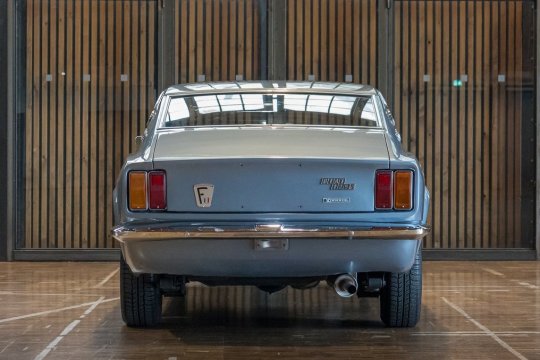
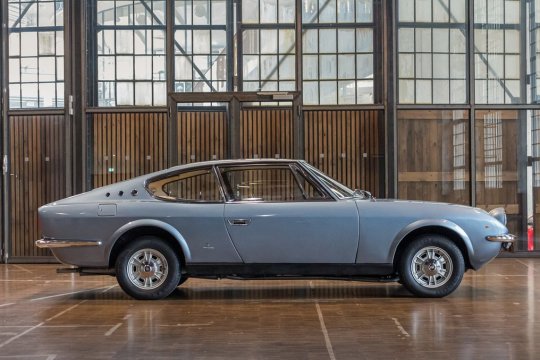
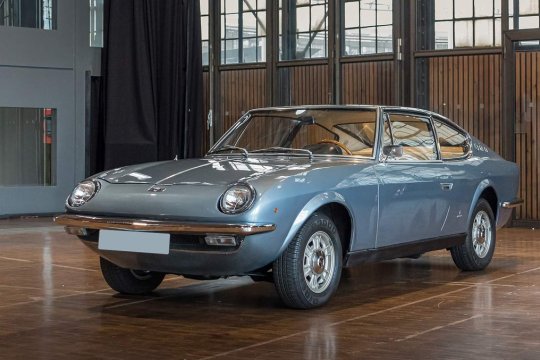
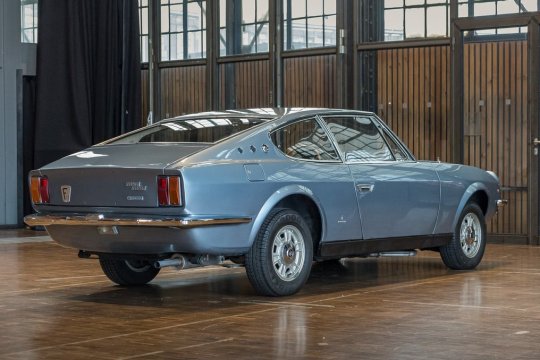

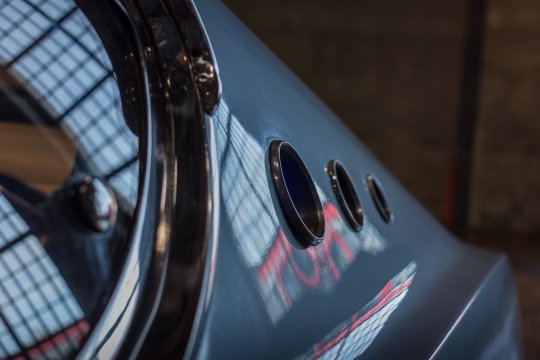
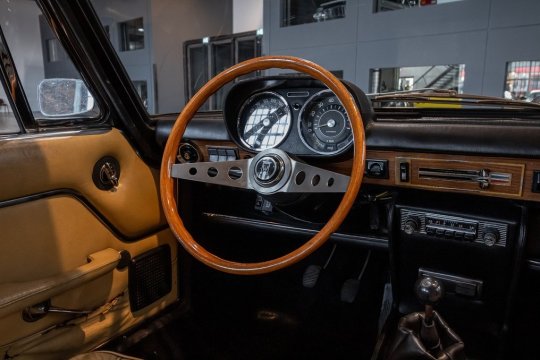


Fiat 125 S Samantha Vignale Coupé
One of the most illustrious of Italian coachbuilders, Carrozzeria Vignale had been founded in 1948 by Alfredo Vignale, whose career had begun pre-war with a successful design on the FIAT Topolino chassis. Enzo Ferrari’s favoured coachbuilder during the Maranello manufacturer’s formative years, Carrozzeria Vignale also designed and built cars for Lancia and Maserati among others, and in the 1960s branched out into automobile manufacture in its own right. For FIAT, Vignale built show models, prototypes and some limited edition models. Based on the contemporary FIAT 124 and 125 models, the 1.6-litre Vignale-bodied Samantha was built in small numbers in the late 1960s. Vignale’s sleek coupé body had very fluid lines thanks to the recessed ‘pop up’ headlights, yet nevertheless afforded comfortable seating for four and a decent amount of luggage space. With 100bhp on tap, delivered via a five-speed gearbox, the Samantha was similar in performance to the 125S donor car with a 0-60mph time of 13 seconds and a top speed of 106mph. The downside was that it cost twice as much. Only a relative handful are believed to survive, making the Samantha 125S one of the rarest twin-cam FIATs of the period. In fact, by 1971, only about 100 copies were produced, were nicknamed "Little Maserati."
#Fiat 125 S Samantha Vignale Coupé#Carrozzeria Vignale#Alfredo Vignale#FIAT#Enzo Ferrari#Lancia#Maserati
477 notes
·
View notes
Text





Opel Kadett Spider, 1965, by Vignale. Designed by Alfredo Zanellato based on a shortened Opel Kadett A platform. Presented at the Geneva Motor Show, the Italian coachbuilder had hoped to arouse Opel's interest in a limited production series but none was forthcoming.
#Opel#Opel Kadett Spider#Vignale#coachbuilt#Opel Kadett A#concept#prototype#design study#Geneva Motor Show#Alfredo Zanellato#short wheelbase#1965#1960s#1960s style
143 notes
·
View notes
Text



Aston Martin DB2/4 1954 - Commandée par la monarchie belge et réalisée par Alfredo Vignale. - source Mounir Naji via Old British Cars.
142 notes
·
View notes
Text
Green and cream: 1950 Fiat 1400 Cabriolet by Vignale
And here, from the magnificent era of great coachbuilders, comes another specimen that we could define as more unique than rare. It is one of the early works of Alfredo Vignale, who had opened his body shop only two years earlier, in 1948, and like many unique or very limited series cars built at the time, it is the first one we have seen in twenty years of classic car shows, themed museums, and…
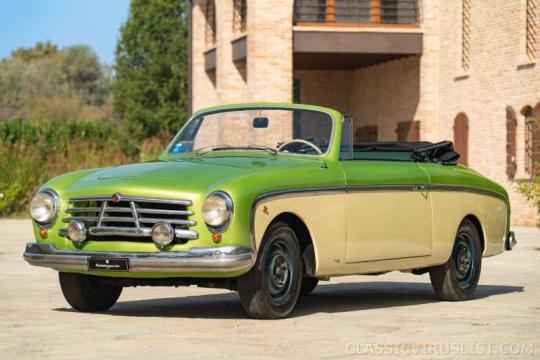
View On WordPress
12 notes
·
View notes
Photo






1951 Ferrari 212 Inter Cabriolet, Body built by Carrozzeria Alfredo Vignale
#art#design#cool cars#vintage cars#sports cars#Sports#cabriolet#ferrari#ferrar 212#1951#collectors cars#luxury cars#luxury lifestyle#alfredo vignale
149 notes
·
View notes
Photo






1952 Lancia Aurelia B52 2000 Coupé by Vignale.
Design by Rodolfo Bonetto for Carrozzeria Alfredo Vignale
One of only 98 Aurelia B52s built
2.0-litre V-6.
176 notes
·
View notes
Text
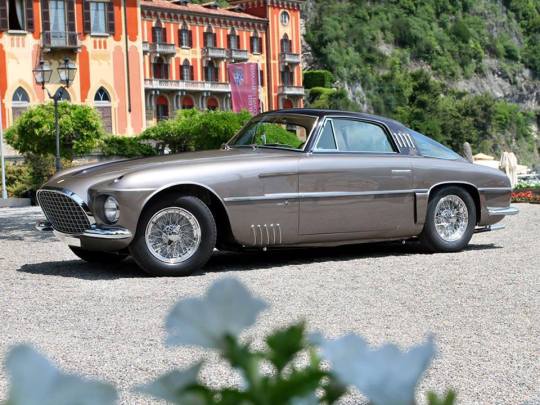
1953 FERRARI 250 EUROPA COUPE BY VIGNALE
$3,300,000 USD | Sold
New York, New York
10 December 2015 Displayed at the 1954 World Motor Sports Show in New York An important one-off Vignale design on an early road-car chassis 2012 Villa d’Este and 2015 Cavallino Classic award winner Ferrari Classiche certified
200 bhp, 2,963 cc SOHC 60-degree V-12 engine with triple Weber 36 DCZ/3 carburetors, four-speed manual transmission, independent front suspension with double wishbones and double leaf springs, live rear axle with semi-elliptical springs and Houdaille shocks, and four-wheel hydraulic drum brakes. Wheelbase: 102 in.
FERRARI AND VIGNALE
In the marque’s early days, Enzo Ferrari was obsessed with finding the right “look” for his road cars in an effort to define his company from a visual standpoint. He courted a number of different coachbuilders who provided not only Ferrari with a number of different styles to choose from but also the customer. At the tail end of the era of the coachbuilt automobile, Ferraris could be swathed with bodies by a variety of European, primarily Italian, coachbuilders, allowing clients to commission their car to their own unique taste.
Opening their doors just one year after the conclusion of the Second World War, Carrozzeria Vignale of Turin was founded by its namesake, Alfredo Vignale, and his brothers, Guglielmo and Giuseppe. Crafting bodies for other manufacturers such as Cisitalia, Fiat, and Lancia, Vignale quickly earned a reputation for quality craftsmanship and innovative designs. Their reputation was further reinforced when Vignale teamed up with Giovanni Michelotti, one of the most celebrated designers of the time. Together, they would create a number of bold and impactful designs for Ferrari, all of which were handcrafted. Each body would be unique, with its own signature flair and bravado.
Outwardly, Vignale-bodied Ferraris are easily identifiable by their juxtaposition of sharp angles and rounded edges, with numerous louvers, air inlets, and other styling cues, including frequent use of two-tone paintwork. Some of these features were fitted simply for ornamentation, while others served a functional purpose. Regardless, Vignale’s designs differed greatly from those of their rival coachbuilders Pinin Farina, Ghia, and Touring, giving them a distinguished style all their own.
From the first Ferrari to wear Vignale coachwork in 1950 to the end of their relationship in 1954, the company had bodied over 150 different automobiles bearing the Cavallino Rampante. Today, these vehicles have become some of the most sought after and desirable Ferraris ever built due to their unique character and charisma. Vignale and Michelotti dared to be different and etched their names into automotive history with their bold designs.
CHASSIS NUMBER 0313 EU
Ferrari built just 22 of the 250 Europa before the introduction of the second-series 250 Europa GT in January 1955. Of these 22 examples, 18 were bodied by Pinin Farina with just four by Vignale, making them the most desirable of the series. The example presented here, chassis number 0313 EU, is the second such Vignale-bodied example built. Furthermore, after this car, only five additional road-going Ferraris would be fitted with Vignale coachwork, making it one of the last of its kind.
Chassis 0313 EU is an exemplary example of Vignale coachwork, exhibiting many of the characteristics for which both Vignale and Michelotti were known. The car’s headlights are inset into the front bumpers, which creates pronounced “eyebrows” above the headlights, and the front turn indicators are deeply recessed into the front wings. A chrome trim strip wraps around the bodywork from the front wheel arches toward the stern and around the trunk, emphasizing the length of the car. Furthermore, the vents just ahead of the doors and on the sail panels are accented with chrome.
Shipped to Luigi Chinetti Motors in New York City in December 1953, this car would be on the world stage a month later when it was displayed by Chinetti at the World Motor Sports Show at Madison Square Garden in January of 1954. By this time, the Ferrari was repainted red, allegedly at Chinetti's request, prior to the show. Following the show, the Ferrari was purchased by Mike Garber of Framingham, Massachusetts, for a price of $17,500. He kept the car for four years before selling it through Gaston Andrey to George H. Parker of Rome, New York, for $4,900 plus an Aston Martin in trade.
Thus, the car became Parker’s four-season daily driver and proved to be quite reliable over the following two years, leaving him stranded only once when a stretched timing chain needed to be replaced. In fact, Parker was married in March 1959, and he and his new bride immediately hit the road in his Vignale coupe, driving across the country to California for Mr. Parker’s new job. The first part of the trip went smoothly, but unfortunately by the end of the trip, the Ferrari was losing oil pressure and required a new gasket by the time they arrived in Los Angeles, where Mr. Parker replaced it himself.
The Ferrari was retained by the Parkers until they sold it in 1960 to Leonard Renick, a Cadillac dealer in Fullerton, California. He was obviously a man with a penchant for GM products because the original Lampredi engine was replaced with a supercharged Chevrolet V-8, a common engine swap at the time as correct Ferrari parts proved difficult to source. Furthermore, the car’s distinctive bumpers were removed along with its rear chrome trim, and its nose was repaired after a minor incident.
As of 1968, chassis 0313 EU was owned by Philip Stanton of Los Angeles, who sold the car to Ferrari of Los Gatos in 1976. It was purchased there later that year by Constantine Baksheef and Alec Sokoloff of Palo Alto. Sometime thereafter, the 250 Europa was taken off the road, but it would remain in California. It was discovered in 2003 by Tom Shaughnessy and sold six years later by him to Heinrich Kämpfer of Seengen, Switzerland, who immediately shipped the car to his homeland to be fully restored.
RETURN TO THE LIMELIGHT
No stranger to early Ferraris and with a well-regarded reputation for accurate, correct, and well-executed work, Kämpfer restored the car himself in Switzerland. Parts that had gone missing over the years, including various trim pieces, the bumpers, and the grille, were reproduced to exacting specifications. Kämpfer even sourced an ICI nitro-cellulose lacquer paint to refinish the car in Bruno Siena. Furthermore, Max Gimmel AG in Arbon, Switzerland, the very same company that produced the original leather for the car in 1953, was commissioned to reproduce the interior. Even the Wilton wool carpeting was shaved down from 9 millimeters to 5.5 millimeters in thickness to be as accurate as possible. During this time, the engine, number 0331 EU, was found to be largely complete, though the block was found to be beyond repair. As such, a new block was cast by Ferrari Classiche, and that engine was fitted to a gearbox of the correct type.
By the end of the restoration in October 2011, it was estimated that Kämpfer spent 3,000 hours of work on the car with an additional 800 hours completed by outside specialists. Reflecting the restoration’s overall attention to detail, the Ferrari is accompanied by an incredible file, detailing not only the history and restoration of the car but also containing samples of the paint, leather, and carpet, as well as original screws, nuts, bolts, and clamps found on the car when it was disassembled prior to the restoration. The car’s first public outing was at the Concorso d’Eleganza Villa d’Este in 2012, where it was awarded the Trofeo Foglizzi for best interior design. The restoration of the car was further lauded in issue 194 of Cavallino magazine, where Alan Boe authored an 11-page color feature about this car, its history, and the restoration.
Subsequently, the Vignale coupe was purchased by Tom Peck of Orange County, California, in 2013. During his tenure, the car was shown at the 60 Years of Ferrari celebration on Rodeo Drive in Beverly Hills in October 2014 and further profiled in the November 2014 issue of Automobile magazine. Following it showing at the 2015 Cavallino Classic, where it was awarded Platinum and the Ferrari Classiche Cup for most outstanding factory-certified Ferrari, chassis number 0313 EU was purchased by its current custodian. Today, it remains just as beautiful as it was the day it left Vignale’s facilities and is a highly compelling example from Ferrari’s coachbuilt era.
While the designs of Pinin Farina ended up winning over Enzo’s heart, forever associating that coachbuilder with Ferrari going forward, it is the designs of Vignale that peak the curiosity of collectors, enthusiasts, and historians the most. The partnership between Ferrari and Vignale was seemingly short yet was highly influential and important to the marque’s history and design language, making those cars incredibly desirable today. Returning to the Empire State for the first time in nearly 60 years, chassis 0313 EU presents as well today as when it was first on display at Madison Square Garden in 1954.
13 notes
·
View notes
Text
LANCIA AURELIA B52 SPYDER BY VIGNALE










LANCIA AURELIA B52 SPYDER BY VIGNALE (1953)
Latest Value ???
The Lancia Aurelia was designed under the direction of Vittorio Jano and quickly became known for its exceptional build quality, and advanced technology. With this car, Lancia started a post-war tradition of naming its cars after famous Roman roads, in this case the Via Aurelia which connected Rome and Pisa. The Aurelia was also the first mass-produced car to be fitted with a V6 engine.
The Aurelia was in manufacture from 1950 to 1958 with production split into six series. The very first Aurelia’s were B10 berlinas using a 1754 cc V6 engine which produced 56 horsepower. A year later, in 1951, the B21 was released with a larger 1991 cc engine alongside a 2-door B20 GT Coupe with a shorter wheelbase. As the years passed, the development continued with the third series in 1953, fifth series in 1956 and the final, sixth series, in 1957.
The Lancia Aurelia B50 was a rolling chassis which was made available to coachbuilders, allowing them to design and build low-volume series, or showcase one-off bodies. However, the B50 had its limitations, it was heavy and its 1.7 litre V6 engine offered limited performance, so in 1952, Lancia unveiled the B52, an improved and lighter chassis fitted with a more powerful 2.0 litre V6. In 1952, Lancia built a mere 86 B52 chassis, followed by a final 12 examples in 1953.
The chassis offered here, B52-1097, was completed at the Lancia factory in early 1953 before being delivered to Carrozzeria Vignale, in the same way as Ferrari often delivered its 166 or 212 chassis to its chosen coachbuilder, including Vignale. Upon delivery, this chassis was fitted with the elegant one-off Spider coachwork we see today, Carrozzeria Alfredo Vignale designed and built exquisitely detailed bodies, using a variety of chassis, including Ferrari, Alfa Romeo, Cisitalia, Maserati, Fiat and ofcourse Lancia.
In 1955, this chassis made its first public appearance at the Brussels Motor Show in Belgium where it was displayed on the Lancia stand with its distinctive Vignale coachwork finished in Metallic Lake Green with a Bordeaux leather interior, just as we see the car today.
Only 12 cars produced ever - 2.0 liter V6 engine - 80 hp - ?? km/h topspeed
https://www.girardo.com
23 notes
·
View notes
Photo

Además de dar carta abierta al diseño exterior que es único, dentro de las peticiones de Joseph Maschuch a Alfredo Vignale, fue que el interior del motor fuera en verde con metal cromado, que tuviera asiento eléctrico al frente, televisión, y un escusado debajo del asiento trasero. #rollsroyce #personalizaed #vignale #silver #warith #silverwraith #vintage #vintagecar #classic #classiccar #classiccars #vignale @rollsroycecars #másqueclásicosyogui https://www.instagram.com/p/CKDcAYlMbR-/?igshid=1f8ins08igyc2
#rollsroyce#personalizaed#vignale#silver#warith#silverwraith#vintage#vintagecar#classic#classiccar#classiccars#másqueclásicosyogui
0 notes
Photo










Fiat 750 Vignale
Carrozzeria Vignale of Turin was founded in 1948 by Alfredo Vignale, it would become one of the most iconic and respected of the Italian coachbuilders. Vignale designed cars, most often low volume variants of main production cars from manufacturers such as Ferrari, Lancia and Maserati. As well as Vignale-penned designs for the previously mentioned titans of the industry, the Turin-based design house was often enlisted by Fiat for prototypes, motor-show concepts and limited editions, much like the 750 which came in Coupe, Berlinetta and Spider body-styles. In essence a Fiat 600, an icon of the Italian economic boom, with its four-cyclinder engine increased from 600cc to a rather zippy 750cc. The bodywork was completely re-styled by Vignale with sleek 1960’s Italian styling just as well suited to some of Fiat’s Italian contemporaries; the car was bodied at a new factory in Grugliasco, near Mirafiori, whilst the Maserati and Lancia coachwork continued to be done in Turin. The 750 on offer here, finished in a classic colour combination of red with black interior, was produced in 1964.
39 notes
·
View notes
Text




Opel Kadett Coupé, 1965 by Vignale. Having failed to attract GM's European operations interest in a Spider, Vignale pivoted and had Alfredo Zanellato create coupé styling for the Turin Motor Show 8 months after Geneva. Still not interest from Opel
#Opel#Opel Kadett Coupé#1965#Vignale#coachbuilt#concept#prototype#coupé#Turin Motor Show#Alfredo Zanellato#design study#General Motors Europe#1960s
135 notes
·
View notes
Text
Trang bị cả nhà vệ sinh trong xe
Trang bị cả nhà vệ sinh trong xe
Choixe: Văn hóa ô tô xe máy:

Một trong những nhu cầu cơ bản nhất của con người đặc biệt được thương nhân Mỹ Joseph Maschuch coi trọng và đó là lý do ông đặt hàng nhà thiết kế huyền thoại tới từ Italia là Alfredo Vignale hoàn tất chiếc Rolls-Royce độc nhất vô nhị này. Yêu cầu thuộc diện không thể thiếu được đưa ra là… hàng ghế sau có toilet.
Đề cập tới vấn đề đó sau, thiết kế chiếc Silver Wraith…
View On WordPress
0 notes
Text
Green orchid: 1950 Fiat 1400 Orchidea by Vignale
Green orchid: 1950 Fiat 1400 Orchidea by Vignale
Here we are in the presence of a very rare – probably unique – coachbuilt Fiat built by Vignale at the beginning of the famous body shop: even if Vignale seems to have always built cars, it actually lasted (under the guidance of Alfredo) only twenty years. Twenty years only but very intense, which have consigned it to the history of motoring thanks also to the close and continuous collaboration…

View On WordPress
4 notes
·
View notes
Text
1965 Ferrari 330 GT 2+2 Shooting Brake By Vignale Is Italian History
I know what you’re thinking, finally a Ferrari that looks like Clark Griswold’s wagon f*cked Christie Brinkley’s Ferrari 308 GTS in National Lampoon’s Vacation.
Needless to say, this creation is not stock, but it’s also not some Frankenstein’s monster of a car. Based off an original 1965 Ferrari 330 GT 2+2 the car then underwent custom work by Vignale. The name Vignale may not mean much to you these days, but it once stood for one of the premiere coach builders of Italy, Alfredo Vignale. As an Italian firm the brand worked closely with fellow Italian manufacturers, such as: Ferrari, Maserati and Fiat.
Vignale was sold to De Tomaso, a name Fast N’ Loud fans should recognize from our Pantera builds, and later taken over by Ford who wold discontinue the Vignale name. Today that name remains relevant through the numerous designs, including this 1965 Ferrari 330 GT 2+2 Shooting Brake by Vignale which heads to auction later this year in California. The unique lot is part of the Petersen Museum Collection being listed by RM Sotheby’s.
The post 1965 Ferrari 330 GT 2+2 Shooting Brake By Vignale Is Italian History appeared first on GAS MONKEY GARAGE | RICHARD RAWLINGS | FAST N LOUD.
0 notes
Text
The Only One Ever Made - 1965 Ferrari 330 GT 2+2 Shooting Brake
The Only One Ever Made - 1965 Ferrari 330 GT 2+2 Shooting Brake #ferrari #shootingbrake #car #classiccar #vintagecar #cardesign #jaykay #Jamiroquai
The Ferrari 330 GT 2+2 Shooting Brake is a car with a remarkable history, it was designed by the two man American team of Bob Peak and Luigi Chinetti Jnr and hand-built by famed Italian coachbuilders Vignale. Only one would be made, and fatefully it would be the last car ever made by Alfredo Vignale who was tragically killed in a car accident.
The Ferrari 330 GT 2+2
The Ferrari 330 GT 2+2 was…
View On WordPress
0 notes
Text
One-off 1965 Ferrari 330 GT Vignale Shooting Brake to be auctioned
One-off 1965 Ferrari 330 GT Vignale Shooting Brake to be auctioned
[ad_1]
Here’s peculiar melding of styles — a 1965 Ferrari 330 GT 2+2 transformed by Italian coachbuilder Alfredo Vignale into a very American-looking wagon shooting brake for the son of American Ferrari importer Luigi Chinetti.
It’s undeniably funky looking, like something conceived by Ferrari designers and the team responsible for the AMC Gremlin after a long night drinking Lambrusco…
View On WordPress
0 notes